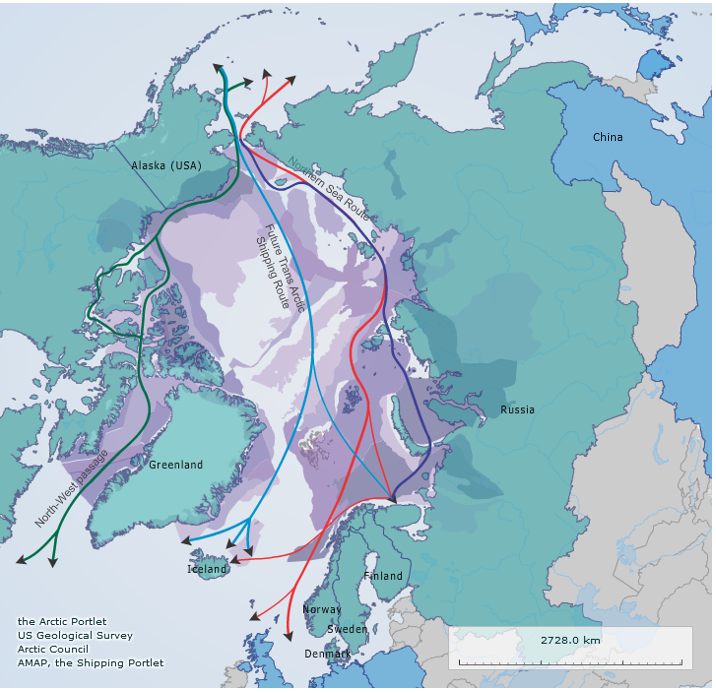| Sr. No. | Charge Head | Amount |
| 1 | Cargo Handling Charges (CHC) Standard | |
| Nhs/Chennai (+ all via these ports) | INR 950 per cbm or INR 1325 per Ton / Min 1325 | |
| Hazardous (Nhs/Chennai + via these ports) | INR 1250 per cbm (Min 4 cbm) | |
| Kolkata | 1939 per cbm or 2339 /mt | |
| 2 | Documentation Fee (D O Fees) | INR 4500 per HBL |
| 3 | Service Fees | INR 7500 per HBL |
| Profit Share : Nil |
The Arctic Route : Chinese Polar Silk Road
The week went by with more discussions on the new route being developed by China through the Arctic to Europe. I had mentioned in my blog during Maritime Week that this route was expected to be the new “happening route” in the next decade since this can cut short transit time from China to Europe by a week at least. By avoiding the routes over Panama and Suez Canals, the saving in transit time can be around 40% from China to Eastern North America.
But new developments are happening earlier than expected due to the Chinese quest for exploring all possibilities of trade routes for logistical optimization. With the grave advantage of cost optimization being diluted due to the cost in production going up in China, and also due to the expected increase in the US taxes and duties (Europe might also follow suit based on its success), the key to ensure the Chinese factories going in full capacity depends on how fast they can deliver the cargo to consumers around the world. The other advantage will be of reverse trade in oil and gas which can cut the cost of fuel for China in the decades to come.
However, the experts are concerned about the increased emission of noxious oxides of Nitrogen and Sulphur. The Antarctic has a ban on heavy fuel oil. But the Arctic does not have any such ban. The packed sea ice are disappearing at a greater rate, thanks to global warming. As a result, countries like Russia and China are trying to exploit the situation by speeding up their Arctic-capable shipbuilding technology. China’s partnering with Russia for its ‘geopolitical and economic interests’, gives it a strategic stake in the Arctic, as well as access to oil, LNG and other mineral resources abounding in the Arctic. By the time the world awakens to the threat of environment pollution due to the increased traffic in the Artic, we can expect the Chinese to move far ahead with making the trade route and a trunk-shipping route, and another wave of JIT advantage going towards the Chinese production behemoths.

The Propositions of China for the Arctic affair are —
1. Expand knowledge
2. Protect atmosphere
3. Use natural, tourism resources
4. Participate in governance, cooperation
5. Promote peace, stability
The high cost for establishing any infrastructure was never a matter of concern for the Chinese governments. While calculating the return of investments on infrastructure, the ROI is normally calculated on 20-30 years minimum, and this is based on the returns by way of developments and prosperity happening in the region as well as the country as a whole. Going by this analysis, the high cost of establishing the Arctic routes will not keep the Chinese at bay, and very soon we will be able to see it becoming a major route to Europe from China.






